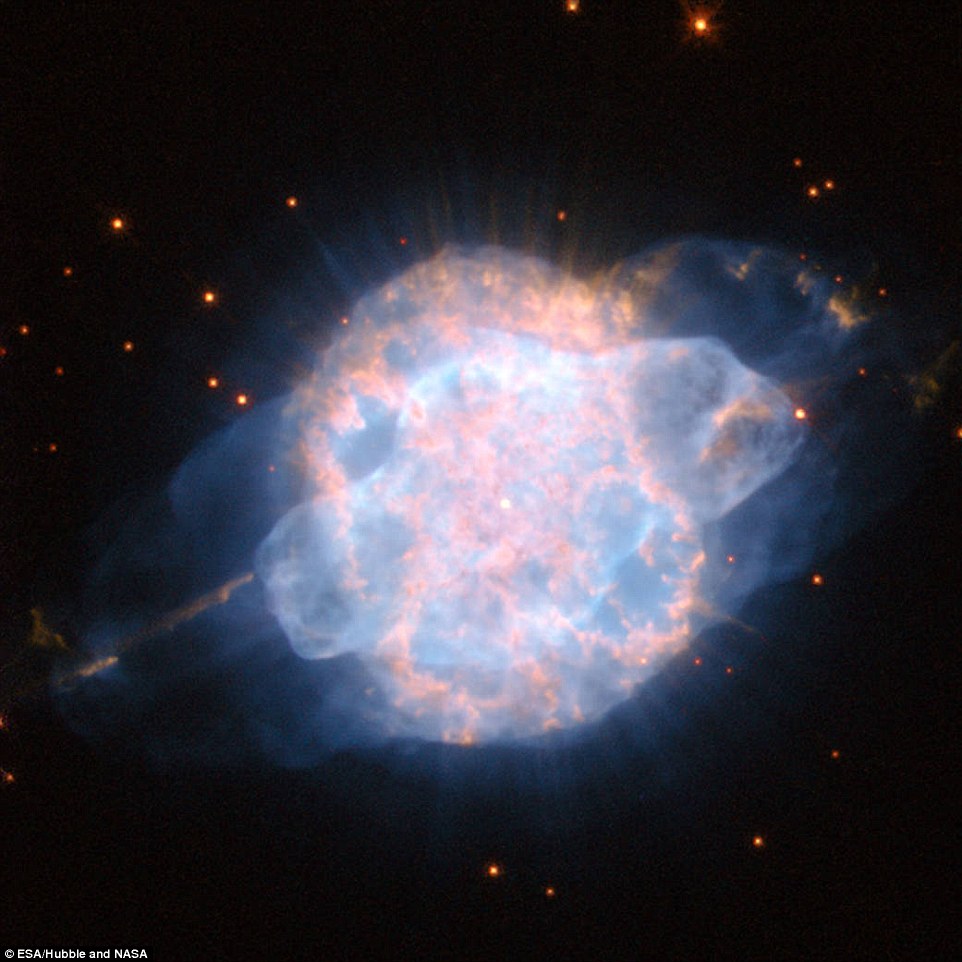It looks uncannily like an eye in the sky, staring back.
In face, this amazing image, captured by the Hubble Space Telescope, shows the planetary nebula NGC 3918, a brilliant cloud of colorful gas in the constellation of Centaurus, around 4,900 light-years from Earth.
It’s ‘eyeball’ is actually dying remnants of a red giant star – and is a glimpse of what will one day happen to our own sun, according to Daily Mail.
During the final convulsive phase in the evolution of these stars, huge clouds of gas are ejected from the surface of the star before it emerges from its cocoon as a white dwarf.
The intense ultraviolet radiation from the tiny remnant star then causes the surrounding gas to glow like a fluorescent sign.
‘These extraordinary and colorful planetary nebulas are among the most dramatic sights in the night sky, and often have strange and irregular shapes, which are not yet fully explained,’ said NASA.
NGC 3918’s distinctive eye-like shape, with a bright inner shell of gas and a more diffuse outer shell that extends far from the nebula, looks as if it could be the result of two separate ejections of gas.
But this is in fact not the case: studies of the object suggest that they were formed at the same time, but are being blown from the star at different speeds.
By the standards of astronomical phenomena, planetary nebulas like NGC 3918 are very short-lived, with a lifespan of just a few tens of thousands of years.
The image is a composite of visible and near-infrared snapshots taken with Hubble’s Wide Field and Planetary Camera 2.
Recent simulations led by Georgia Tech astrophysicsts suggest ancient red giant stars may have been subjected to repeated collisions with a massive accretion disk, stripping away much of their mass, and causing them to ‘disappear’ from the Milky Way.
Red giant stars may each have orbited through the disk dozens of times, some taking days or even weeks to complete the crossing, losing mass each time.
As these stars collided with the disk, they also likely reduced kinetic energy by 20 to 30%, the researchers say.
This would have shrunk their orbits and drawn them close to the Milky Way’s black hole.
And, it could have caused them to spin more rapidly.
The simulations support the hypothesis that red giants are still there, but they are too dim to be seen.
N.H.Kh

